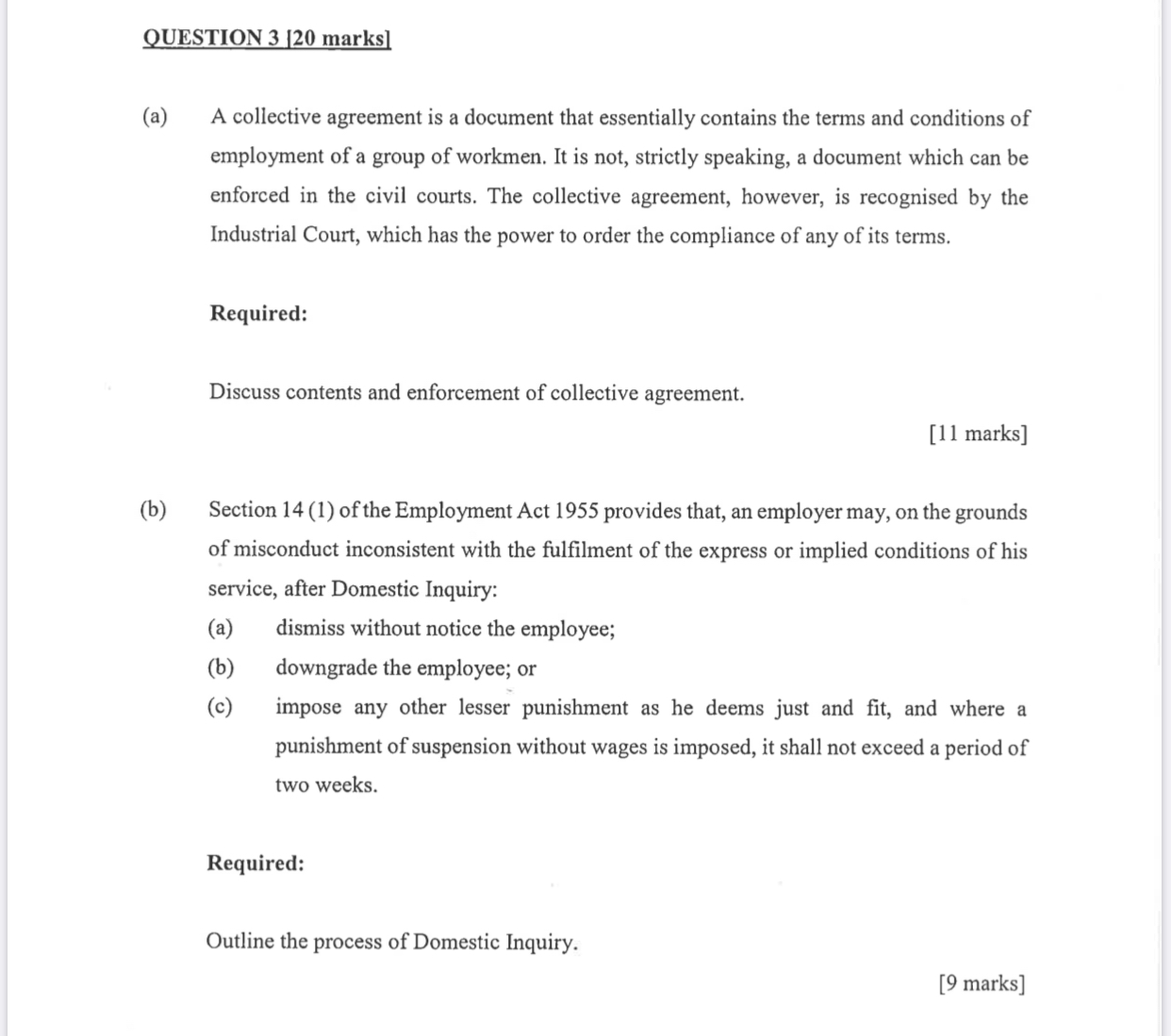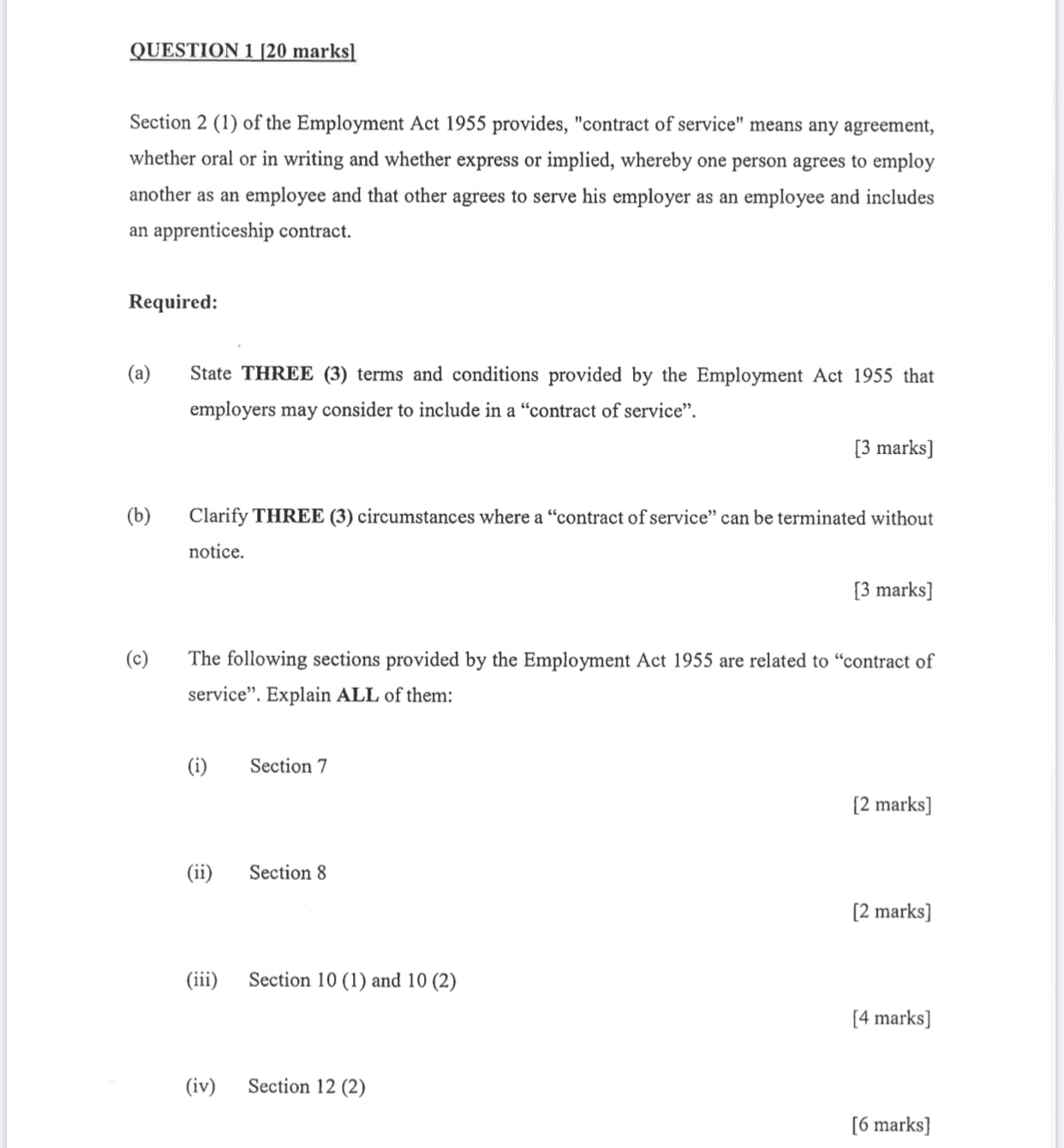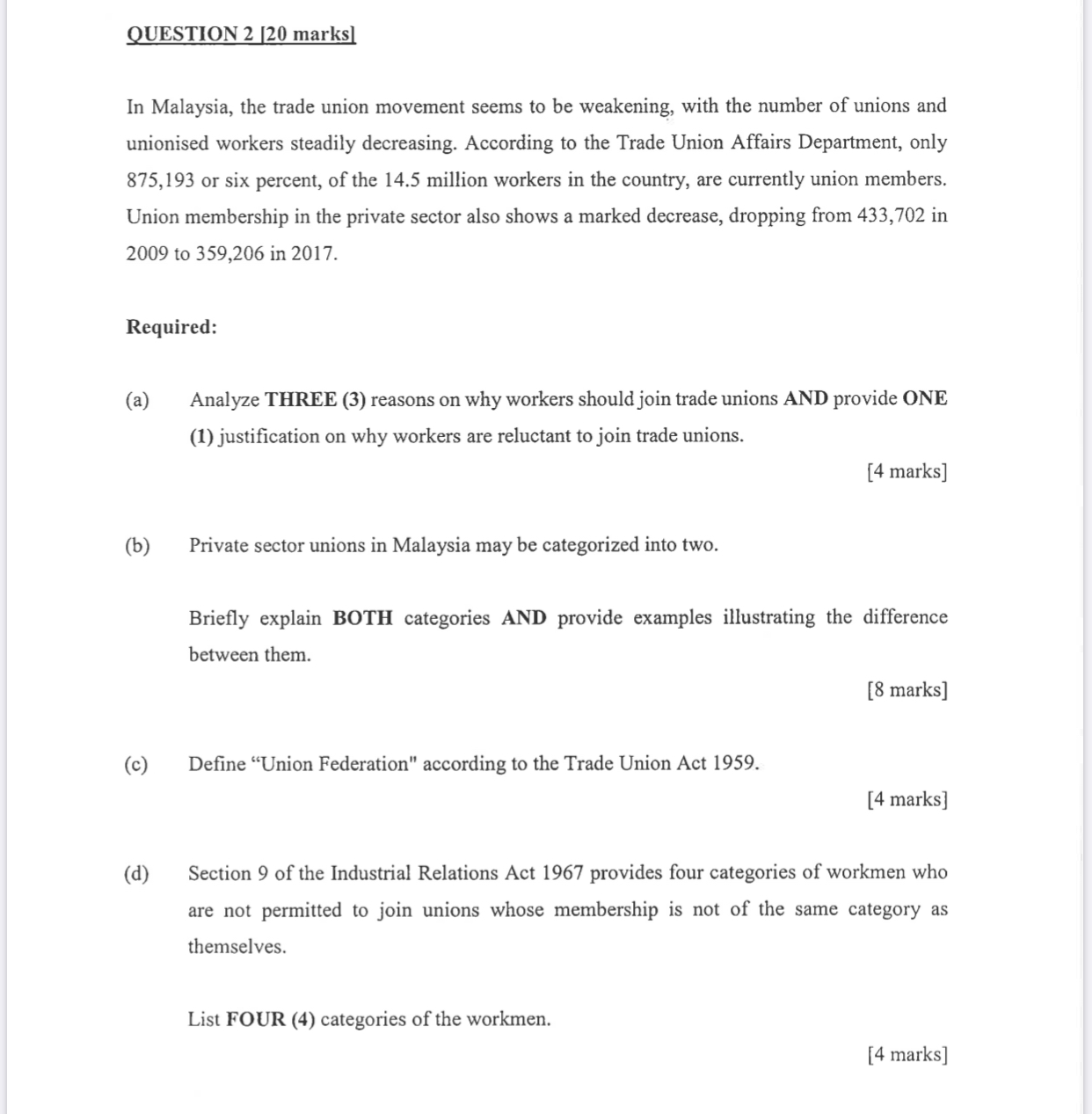QUESTION 3 120 marksl (a) A collective agreement is a document that essentially contains the terms and conditions of employment of a group of workmen. It is not, strictly Speaking, a document which can be enforced in the civil courts. The collective agreement, however. is recognised by the Industrial Court, which has the power to order the compliance of any of its terms. Required: Discuss contents and enforcement of collective agreement. [11 marks] (b) Section 14 (l) of the Employment Act 1955 provides that, an employer may, on the grounds of misconduct inconsistent with the fullment of the express or implied conditions of his service, after Domestic Inquiry: (a) dismiss without notice the employee; (b) downgrade the employee; or (c) impose any other lesser punishment as he deems just and t, and where a punishment of suspension without wages is imposed, it shall not exceed a period of two weeks. Required: Outline the process of Domestic Inquiry. [9 marks] QUESTION 1 IN marksl Section 2 (l) of the Employment Act 1955 provides, "contract of service" means any agreement, whether oral or in writing and whether express or implied, whereby one person agrees to employ another as an employee and that other agrees to serve his employer as an employee and includes an apprenticeship contract. Required: (a) State THREE (3) terms and conditions provided by the Employment Act 1955 that employers may consider to include in a \"contract of service\". [3 marks] (13) Clarify THREE (3) circumstances where a \"contract of service\" can be terminated without notice. [3 marks] (c) The following sections provided by the Employment Act 1955 are related to \"contract of service". Explain ALL of them: (i) Section 7 [2 marks] (ii) Section 8 [2 marks] (iii) Section 10 (l) and 10(2) [4 marks] (iv) Section 12 (2) [6 marks] QUESTION 2 |20 marks| In MalaySia, the trade union movement seems to be weakening, with the number of unions and unionised workers steadily decreasing. According to the Trade Union Affairs Department, only 875,193 or six percent, of the 14.5 million workers in the country, are currently union members. Union membership in the private sector also shows a marked decrease, dropping from 433,702 in 2009 to 359,206 in 2017. Required: (3) (b) (C) (d) Analyze THREE (3) reasons on why workers should join trade unions AND provide ONE (1) justication on why workers are reluctant to join trade unions. [4 marks] Private sector unions in Malaysia may be categorized into two. Briey explain BOTH categories AND provide examples illustrating the difference between them. [8 marks] Dene \"Union Federation" according to the Trade Union Act 1959. [4 marks] Section 9 of the Industrial Relations Act 196? provides four categories of workmen who are not permitted to join unions whose membership is not of the same category as themselves. List FOUR (4) categories of the workmen. [4 marks]









